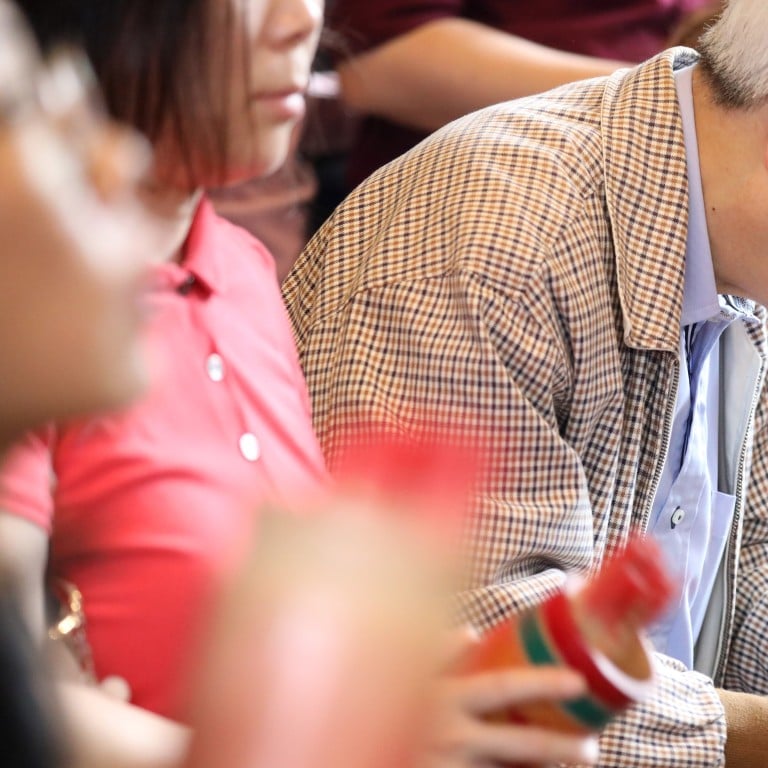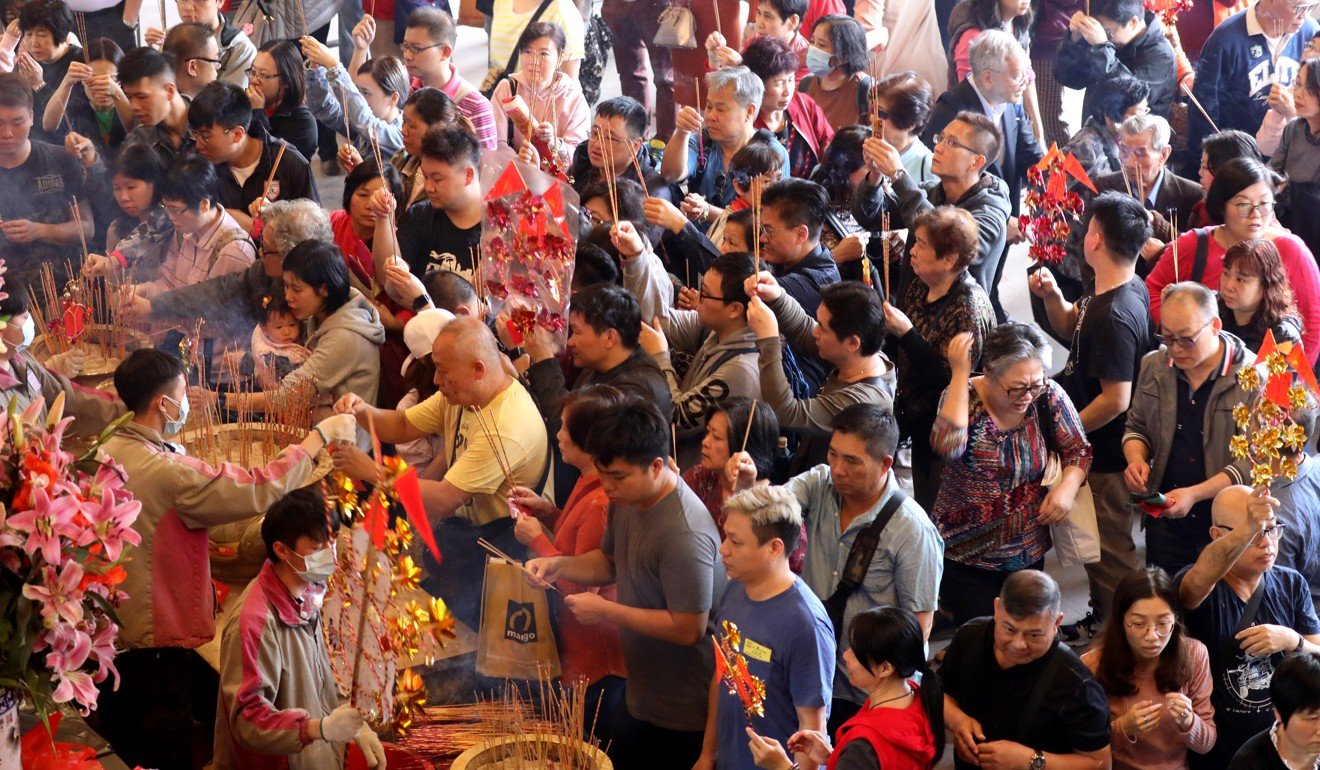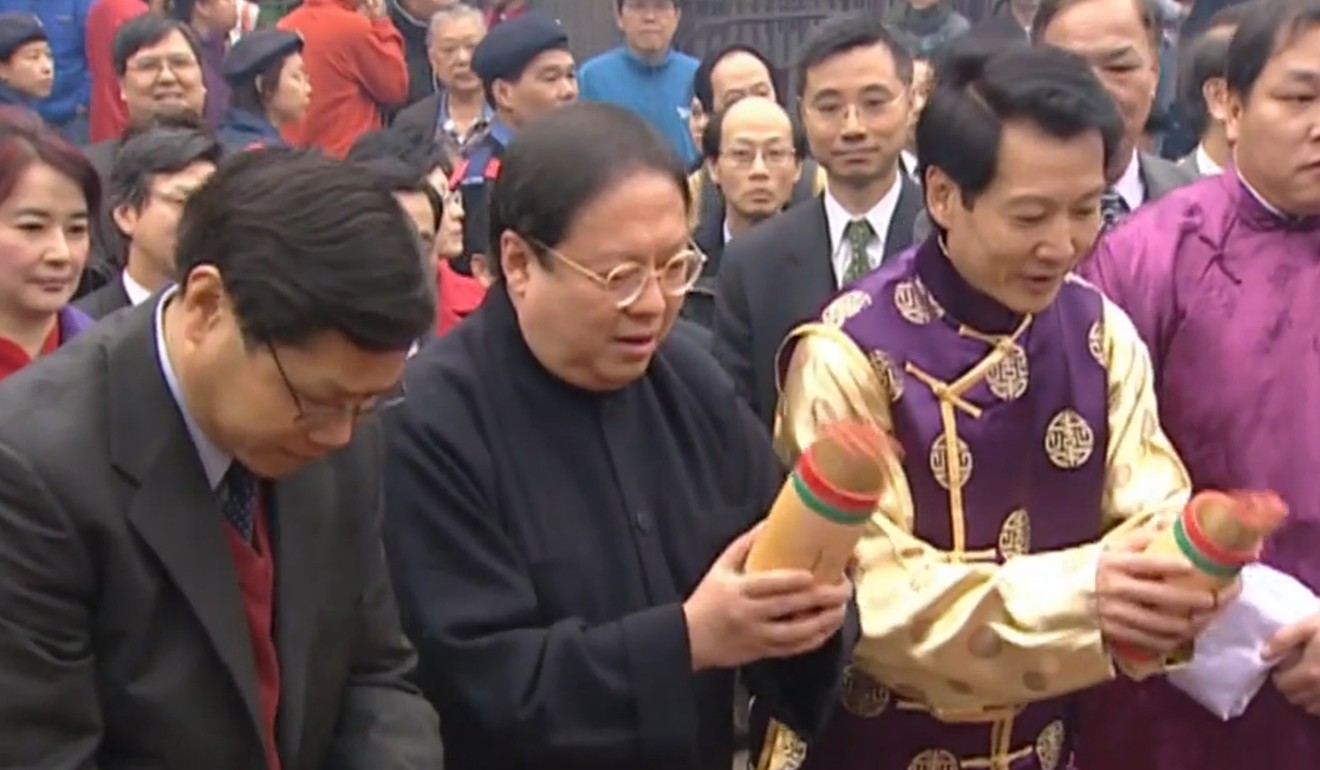
Good news or bad omens: why picking fortune sticks at Hong Kong’s Che Kung Temple over Lunar New Year has become a big draw
- Although some see it as mere superstition, fortune stick drawing has become a semi-official ritual over recent decades
- Government officials have not drawn sticks since 2003, when bad luck was predicted – and city was hit by Sars, economic downturn and a huge protest
Bureaucrats and rural leaders took part in the act, currently organised by Sha Tin Rural Committee, from the 1980s though it has never been considered an official event.
What is fortune stick drawing?
Drawing a stick is a form of fortune-telling commonly done at Taoist temples in Hong Kong.
Apart from Che Kung Temple, it also happens at sites where other deities, such as Tin Hau, Wong Tai Sin and Kwan Tai, are worshipped.

Fortune sticks are usually put into various categories that indicate good, bad or neutral omens. At Che Kung Temple, the draw uses a bamboo cylinder containing 96 numbered sticks – 35 refer to good fortune, 44 are neutral and just 17 signify bad omens.
Fortune-tellers give their verdict on Hong Kong’s Year of the Pig
Each stick refers to a prophecy, which is usually presented as four lines of text.
Patrons can pay a small fee and have an interpreter at the temple decipher the prophecy’s meaning in greater detail.
Who draws sticks on behalf of Hong Kong during Lunar New Year?
It is customary for the leader of powerful rural body the Heung Yee Kuk to draw a stick on behalf of Hong Kong on the second day of Lunar New Year. The day marks the birth of Che Kung, a Song dynasty general, according to folklore. Another person, usually a member of Sha Tin Rural Committee, also draws one for the district.
When did the semi-official ritual start?
There is no official record of when government officials and members of the kuk started drawing fortune sticks on behalf of Hong Kong and Sha Tin.
News clippings suggest the practice began in the 1980s, and that officials at the Home Affairs Department were sometimes involved.
Coincidentally, that year Hong Kong was hit by an outbreak of severe acute respiratory syndrome (Sars) which killed 299 in the city and led to an economic downturn.

It had been rumoured the sticks indicating bad luck were removed from the container ahead of the event but the 2003 draw debunked such speculation.
Hongkongers enjoy spectacular performances at Lunar New Year night parade
After the turmoil in 2003, then kuk leader Lau Wong-fat drew the stick for the city until the duty was passed to his son and successor Kenneth Lau Ip-keung in 2015.
Government officials, usually from Sha Tin District Office, also attend.
The crowded Che Kung Temple also gave rise to some memorable moments, such as when a lion dancer bumped into lawmaker and former security secretary Regina Ip Lau Suk-yee in 2015. Ip lost her balance momentarily, but quickly got up. This year, Ip was reunited with the lion dancer and gave the man red packets.
What is the temple’s history?
Worshipping Che Kung only started in the late Ming dynasty, when an epidemic broke out in Sha Tin, according to the Chinese Temples Committee, which runs the site and 23 others.
People believed Che Kung could clear the illness and after they built a temple in the area the epidemic went away, according to folklore. Since then, the temple has undergone two major renovations, most recently in 1994.

When do locals visit the temple?
The third day of Lunar New Year is usually the busiest time at the temple. Tradition has it that people are prone to quarrelling on that day, so Hongkongers avoid visiting relatives and friends. Instead, some go to temples to make offerings and draw fortune sticks.
Some also buy miniature windmills at the temple, which are said to improve one’s luck. The charms come in various sizes, and can cost as much as HK$688.
Last year, more than 60,000 people visited the temple on the third day of the Lunar New Year.

